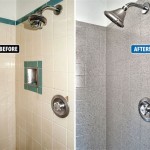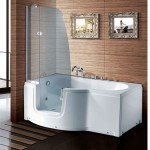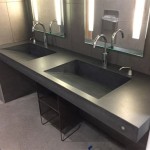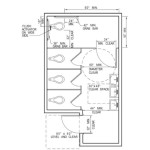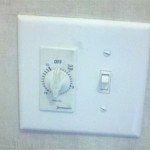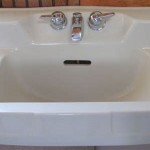Essential Aspects of Handicap Bathroom Sinks
Handicap bathroom sinks are crucial for ensuring accessible and inclusive restrooms for individuals with disabilities. These specialized sinks play a vital role in promoting dignity, comfort, and safety in bathroom environments. Understanding the essential aspects of handicap bathroom sinks is key to creating functional and user-friendly spaces that meet the unique needs of disabled users.
This article explores the essential aspects of handicap bathroom sinks, providing insights into their importance and design considerations. We cover dimensions, height, features, materials, and compliance standards to help you make informed decisions when selecting and installing handicap bathroom sinks.
Dimensions and Height
The dimensions of handicap bathroom sinks are designed to accommodate the needs of individuals with physical disabilities. They are typically wider and deeper than standard bathroom sinks, providing ample space for wheelchair users to maneuver and wash their hands. The sink height should be accessible to users sitting in wheelchairs, typically ranging from 28 to 34 inches from the floor to the rim of the sink.
Features
Handicap bathroom sinks often incorporate specific features to enhance accessibility. Grab bars provide additional support and stability for individuals with limited mobility. Lever-style handles are easy to operate for those with limited hand strength. Additionally, sensor-activated faucets eliminate the need for manual operation and promote hygiene.
Materials
The materials used in handicap bathroom sinks play a significant role in durability, hygiene, and aesthetic appeal. Stainless steel is a popular choice due to its resistance to corrosion and easy maintenance. Enameled cast iron provides a durable and long-lasting surface. Solid surface materials, such as acrylic or quartz, offer a seamless and modern look.
Compliance Standards
Handicap bathroom sinks must comply with specific building codes and accessibility standards. The Americans with Disabilities Act (ADA) sets forth detailed guidelines for the design and installation of accessible bathroom facilities. These standards ensure that handicap bathroom sinks are properly positioned, have appropriate dimensions, and incorporate necessary features for accessibility.
Conclusion
Handicap bathroom sinks are essential elements of accessible restrooms, providing dignity, comfort, and safety for individuals with disabilities. By understanding the essential aspects of handicap bathroom sinks, including dimensions, height, features, materials, and compliance standards, you can create functional and user-friendly spaces that promote inclusivity and meet the unique needs of disabled users.

Adjustable Wheelchair Accessible Sink Single Stall Restrooms

Choosing A Wheelchair Accessible Bathroom Sink

Accessible Sink Aging In Place Remodeling

Wheelchair Vanity Ada Cabinet Bathroom Sink Accessible

How To Make A Bathroom Accessible The Home Depot

Choosing A Wheelchair Accessible Bathroom Sink Ada Requirements Patient Safety Usa

Stylish And Functional Solutions For An Accessible Bathroom

Bathroom Design Considerations For Home Handicap Bathrooms Bath Doctor

Choosing A Wheelchair Accessible Bathroom Sink Ada Requirements Patient Safety Usa

Photo Wheelchair Accessible Bathroom Sink Travel
Related Posts
